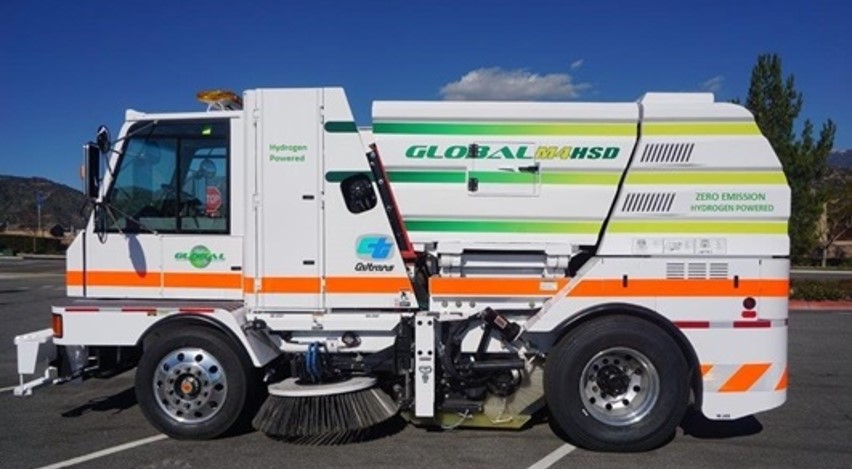The California Department of Transportation (Caltrans) manages 249 highways totaling more than 50,000 lane miles. It also oversees three state-supported Amtrak regional rail routes, as well as aviation facilities.
The department’s mission is to build communities and improve lives with a “people first” approach that uses transportation as the conduit, said Chief Deputy Director Mike Keever during a featured session at CAMX 2024 on sustainability in transportation infrastructure. To achieve this, Caltrans is guided by four core priorities – safety, equity, climate change and economic prosperity.
“Being a people first organization guided by our core four, it seems natural that sustainability is an important value for the department,” said Keever. “We want to be good stewards.”
One of the ways Caltrans promotes sustainability is by offering multimodal choices that reduce dependence on driving.
“A major focus for us is to provide transportation options – designing and building bicycle and pedestrian infrastructure, connecting and supporting transit, and providing digital alternatives like broadband access to substitute for transportation trips,” said Keever.
Caltrans will spend approximately $930 million in the next four years to improve bicycle and pedestrian infrastructure, including 265 miles of new and improved bike lanes on state highways.
“Since 2017, Caltrans has increased our bike and pedestrian infrastructure spending six-fold,” said Keever.
In addition, the state legislature recently passed SB 125, which guides the distribution of $4 billion in general funding through the Transit and Intercity Rail Capital Program to regional transportation planning agencies. The agencies can use the money to fund transit operations or capital improvements.
Another key to sustainability is the state’s commitment to reducing greenhouse gas emissions.
“One of the most important ways that California is moving the needle on emissions is by investing in zero-emission vehicles,” said Keever.
The California Air Resources Board requires all light-duty vehicles to be zero emission by 2035. Medium and heavy-duty vehicles have until 2045 to comply. Caltrans is helping achieve that goal in collaboration with the California Energy Commission through the National Electric Vehicle Infrastructure Formula Program, which is providing $384 million to the state over the next five years.
“With that, we should be able to at least double the number of fast-charging electric vehicle sites along key highway corridors,” said Keever.
Caltrans is also making changes to its fleet of cars, pickup trucks, medium- and heavy-duty trucks and locomotives. Last year, the department transitioned 600 vehicles to zero-emission vehicles and installed more than 1,200 workplace and fleet chargers. In addition, it got its first fully electric Class 8 truck with a gross vehicle weight rating of 82,000 pounds and 275-mile battery range.
“California is blessed with some fantastic natural resources, so another key part of sustainability is reducing our transportation system’s impact on the surrounding ecosystems,” said Keever.
Caltrans is developing several wildlife crossings, including the Wallis Annenberg Wildlife Crossing across U.S. Highway 101 in Los Angeles County. The 210-foot-long, 174-foot-wide vegetated bridge will connect the Santa Monica Mountains and the Sierra Madre Range, two habitats for mountain lions, bobcats and other animals that require large home ranges to thrive.
Wildlife crossings, fish passage projects, accelerated bridge construction and other applications present opportunities for composites, said Keever.
“You have to pick the right solution to solve the right problem,” he said. “Caltrans’ use of composites can have many benefits.” These include reduced construction times, lower transport and installation costs, and improved durability and lifespan.
Caltrans currently uses composites in numerous applications, including pultruded decks and grating systems, e-glass and carbon fiber wet layup for strengthening and repairs, pultruded bars for near-surface mounted strengthening of bridge deck overhangs and GFRP reinforcement.
Some of Caltrans’ composite projects include construction of the first-ever FRP cantilevered pedestrian walkway on Sacramento’s Tower Bridge and repair of Fernbridge, a concrete arch bridge across the Eel River that was damaged in a 2022 earthquake. The repair included CFRP pultruded bars for near-surface mounted reinforcement, wet layup layers and anchors.
State and federal programs are driving the use of sustainable materials. For instance, the 2017 Buy Clean California Act dictates that infrastructure agencies use environmental product declarations (EPDs) to determine the maximum acceptable global warming potential for four materials – structural steel, concrete reinforcing steel, flat glass and mineral wool board insulation.
“Everybody can see where this is going,” said Keever. “So, Caltrans is working with industry to help develop EPD-compliant materials through a pilot program launched last year.” Caltrans is reimbursing concrete and asphalt plants for the development of EPDs for their materials.
Earlier this year, ACMA and IACMI – The Composites Institute were selected to receive a $6 million, five-year grant from the Environmental Protection Agency, which will help fund deployment of an LCA-to-EPD generator and development of EPDs for composite construction products and materials. These EPDs could create opportunities for composites companies at Caltrans and other state DOTs.
ACMA’s Transportation Structures Council has initiated a dialogue with leaders from Caltrans about engaging the department’s engineers on sustainability efforts and opportunities in the composites market. The DOT launched a vendor portal at caltrans.brightidea.com where companies can share their solutions.
“Sustainability and innovation are very important to Caltrans, and a key aspect of this is collaboration with industry,” concluded Keever.
Susan Keen Flynn is managing editor of Composites Manufacturing magazine. Email comments to sflynn@keenconcepts.net.
As part of its commitment to sustainability, Caltrans is transitioning to zero-emission vehicles, including this hydrogen-powered street sweeper.
Photo Credit: Caltrans



